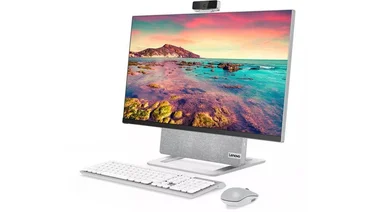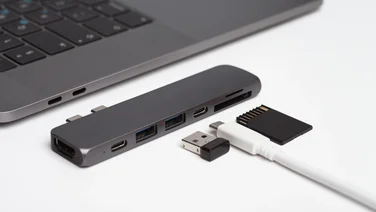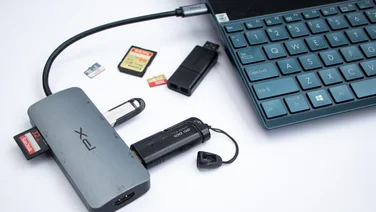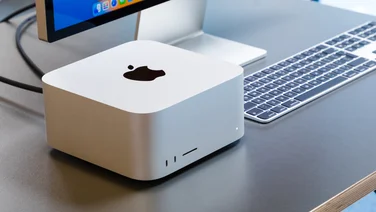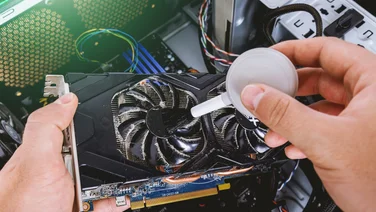To help us provide you with free impartial advice, we may earn a commission if you buy through links on our site. Learn more





- Runs quietly
- Ridiculously fast
- Fantastic 4K gaming performance
- Entry-level motherboard
This is the second system we’ve seen to partner Intel’s Core i9-9900K with a GeForce RTX 2080 graphics card, a combination that debuted in the Asus ROG Strix GL12CX.
As the adage goes, good things come to those who wait – and in this case you not only save £400, but also have a much quieter and more agreeable system.
That’s good news. When you’re in the midst of a game, no doubt simultaneously broadcasting to your loyal Twitch fans, quiet running fans when the system is pushed are hugely welcome.
Yoyotech Warbird X2 review: Features and performance
And that’s where the Warbird X2 scores a major victory: while you can hear low-level fan noise all the time, it only steps up a mild notch when at full pelt. To use a car analogy, where the Asus felt like it was in third gear tackling a nasty hill, the Warbird X2 is smoothly negotiating a motorway in sixth, occasionally dropping to fifth when things get rough.





Part of the fun of owning a machine like this is to see just how fast it can go, and the good news is that it has just as much potential as the Asus. Yoyotech supplies it at 4.7GHz, but all of the Core i9-9900K chips we have seen so far have the capability to reach 5GHz.
Cooler Master’s popular MasterLiquid Lite 120 water cooler is in place to help such experiments, and while 5.2GHz proved a step too far, the system proved stable at 5GHz. Naturally, each CPU is different, so you’ll find your own limits.
The Asus was pre-overclocked to 4.8GHz and was supported with a 512GB Optane SSD, along with marginally superior 2,666MHz DDR RAM – the Yoyotech includes 2,400MHz DDR4 RAM and a solid 512GB Samsung Evo 970 SSD.





According to the A5 SSD tests, the Samsung is a faster disk for sequential reads, scoring 2.4GB/sec for writing and 2.6GB/sec for reading. Asus’ Optane disk managed 2.7GB/sec for writing but 1.5GB/sec for reading.
Does this matter? I’m not convinced. Nor does it really matter that the Asus proved marginally faster in our benchmarks, managing 351 overall to the Yoyotech’s 327. When I overclocked the Yoyotech to 5GHz (where, admittedly, its CPU temperature hit an average of 95 ̊C during benchmarking), it reached 344. There are incredibly few tasks where you’re going to notice the difference between these machines.
Yoyotech Warbird X2 review: Gaming
It’s a similar story in gaming, where both machine’s 4K performance is beyond rebuke. This time, however, the Warbird takes the lead.
In Metro: Last Light, the Yoyotech scored 65.4fps at Very High settings to the Asus’ 60.1fps, with 72.2fps in Rise of the Tomb Raider at 4K (versus 60.5fps) and 117fps in our stalwart benchmark Dirt: Showdown at 4K (versus 116fps). We checked with Nvidia why there might be such a big difference in Rise of the Tomb Raider, but the best theory we could come up with was driver updates in the intervening three months.





As always, it’s never a great idea to be bogged down by benchmark scores. The point is, the Warbird is an excellent 4K gaming system, just like the Asus before it, and thanks to support for Nvidia’s ray tracing technology, it will also make compatible games look more realistic.
The major caveat is that ray tracing is slated for a handful of games; the RTX family’s other technology, DLSS (deep learning super sampling), is more important in the short-term, as it helps to produce sharper, higher-res images – and far more games will benefit.
Yoyotech Warbird X2 review: Design, connectivity and storage
Yoyotech chooses Asus’ Prime Z370-P II motherboard as its base. It’s an entry-level board, with only two full-length PCIe 3 x16 slots and no support for SLI, while storage is relatively limited with only four SATA ports.
That said, there are two M.2 slots, and with one occupied and one SATA port taken, plus three empty drive bays prearranged in the NZXT case, there are still ways to take advantage of the Intel chipset’s RAID0, 1, 5 and 10 capabilities. We’re happy to see a Wi-Fi card in the bottom-most PCIe x16 slot, too, even if it is just an 802.11n card.
Those looking for a lot of bling may be disappointed by the plain black fans. In terms of lighting, all you get is a strip of top-mounted white LEDs, the configurable RGB lights on the G.Skill Trident Z memory, the water cooler’s backlit Cooler Master logo and a strip of colour on the graphics card.
Naturally, the NZXT H700 case has a tempered glass window for you to gaze through, though. And the case is well built, with four top-mounted USB-A ports (two USB 2, two USB 3.1) plus mic and headphone jacks.
Yoyotech Warbird X2 review: Verdict
It all adds up to a fast and stylish machine, with its major benefit over Asus being quiet running.
Keen upgraders, and those wishing to overclock to high heaven, should ask Yoyotech to install a higher-spec motherboard – and note the one-year return-to-base warranty, too – but if you’re just looking for a ridiculously fast, ready-made system, the Yoyotech Warbird X2 is a great choice.
| Key specifications | |
|---|---|
| Processor | Intel Core i7-9900K (clocked at 4.7GHz) |
| Motherboard | Asus Prime Z370-P II |
| RAM | 16GB 2,400MHz G.Skill Trident Z DDR4 |
| Graphics card | 8GB Nvidia GeForce RTX 2080 |
| Watercooling | CoolerMaster MasterLiquid Lite 120 |
| SSD | 512GB Samsung 970 Evo M/2 PCIe SSD |
| Hard disk | 2TB |
| Wireless card | 802.11n |
| Operating system | Windows 10 Home |
| Chassis | NZXT H700 |
| PSU | 650W |
| Warranty | 1-year RTB |
| Dimensions | 230 x 494 x 516mm (WDH) |
| Price | £2,600 inc VAT |

